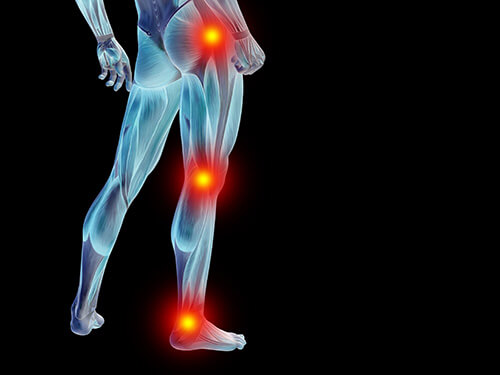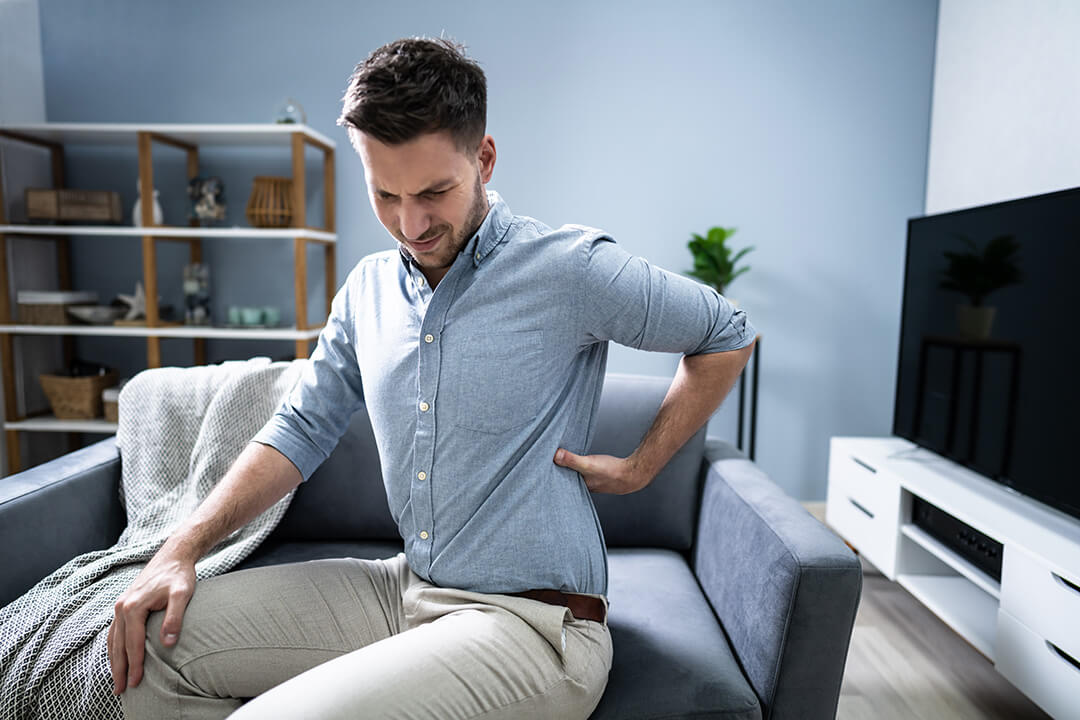Lower back pain is a prevalent and often debilitating condition that affects millions of people worldwide. While it’s easy to attribute back pain solely to issues in the lumbar region, a comprehensive understanding reveals that the health of our feet, knees, and hips plays a crucial role in the development and exacerbation of lower back pain. In this article, we’ll delve into the intricate connection between these areas and explore how solutions such as custom orthotics, bracing, and footwear modifications can provide much-needed relief.
The Kinetic Chain: Feet, Knees, Hips, and the Lower Back
Our body is an interconnected system where each part influences the other. The kinetic chain, a concept in biomechanics, highlights the interdependence of various joints and muscles in our body. When one link in this chain is compromised, it can have a ripple effect, impacting adjacent areas. The feet, knees, hips, and lower back are key components of this chain, and issues in one area can contribute to or exacerbate problems in another.

Feet: The Foundation of Our Body
Our feet bear the weight of our entire body and play a crucial role in maintaining balance and stability. Foot-related problems, caused by overpronation or supination, can lead to an improper distribution of weight and affect the alignment of the entire body. When the feet are not adequately supported, it can result in altered biomechanics, reduced shock absorbing abilities, therefore causing stress and strain on the lower back.
Knees: The Middle Ground
The knees act as a bridge between the feet and hips, absorbing shock and facilitating movement. Conditions like misalignment, instability and arthritis in the knees can disrupt the smooth functioning of the kinetic chain. Over time, this can contribute to imbalances that manifest as lower back pain.
Hips: The Powerhouse
The hip joints are critical for mobility and power generation. Weakness or tightness in the hip muscles can affect the alignment of the spine and contribute to lower back pain. Additionally, conditions like hip osteoarthritis and bursitis can lead to altered gait patterns, further exacerbating stress on the lower back.
Solutions for Alleviating Lower Back Pain
Understanding the interconnectedness of the feet, knees, hips, and lower back allows for targeted interventions to alleviate pain and improve overall function. Here are some effective solutions:
Custom Orthotics
Custom orthotic insoles are designed to provide personalized support, correcting biomechanical imbalances in the feet. By promoting proper alignment, and assistance with gait mechanics, custom orthotics can alleviate stress on the lower back and contribute to improved overall posture.
Bracing
Knee braces can offer stability and support, reducing the risk of misalignment and minimizing the impact on the lower back. Bracing is particularly beneficial for individuals with conditions like osteoarthritis or ligament instability.
Footwear Modification
Choosing the right footwear is crucial for maintaining proper alignment. Shoes with adequate fit, cushioning, and torsional stability, can help distribute weight evenly, reducing strain on the lower back. In some cases, footwear modifications may be recommended to address specific biomechanical issues.
Addressing lower back pain requires a holistic approach that considers the entire kinetic chain, from the feet to the hips. Recognizing the impact of foot, knee, and hip health on the lower back allows for targeted interventions that can provide relief and improve overall quality of life. Whether through custom orthotics, bracing, or footwear modification, taking proactive steps to support the body’s natural biomechanics can make a significant difference in managing and preventing lower back pain.

